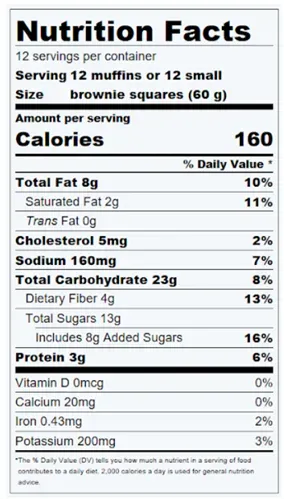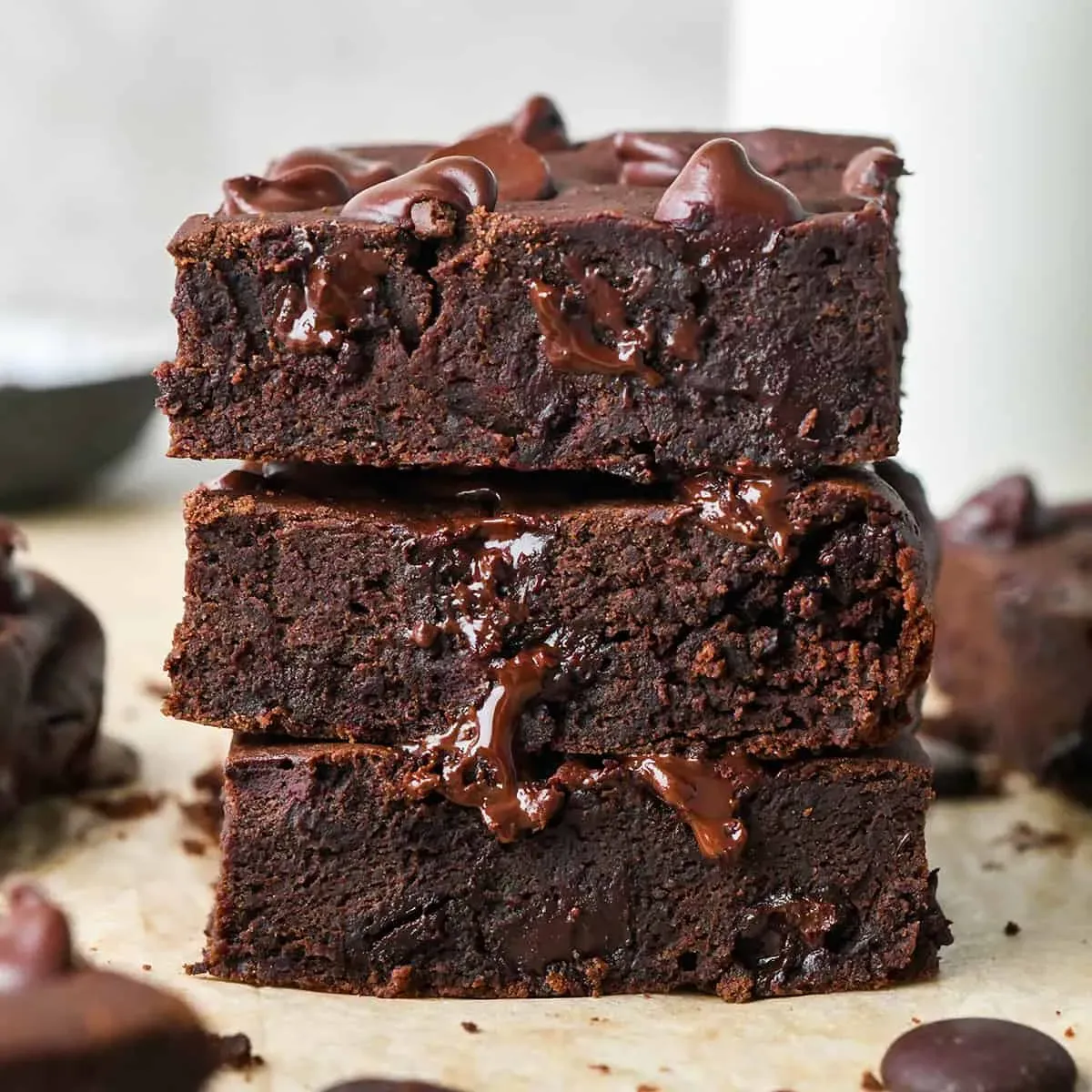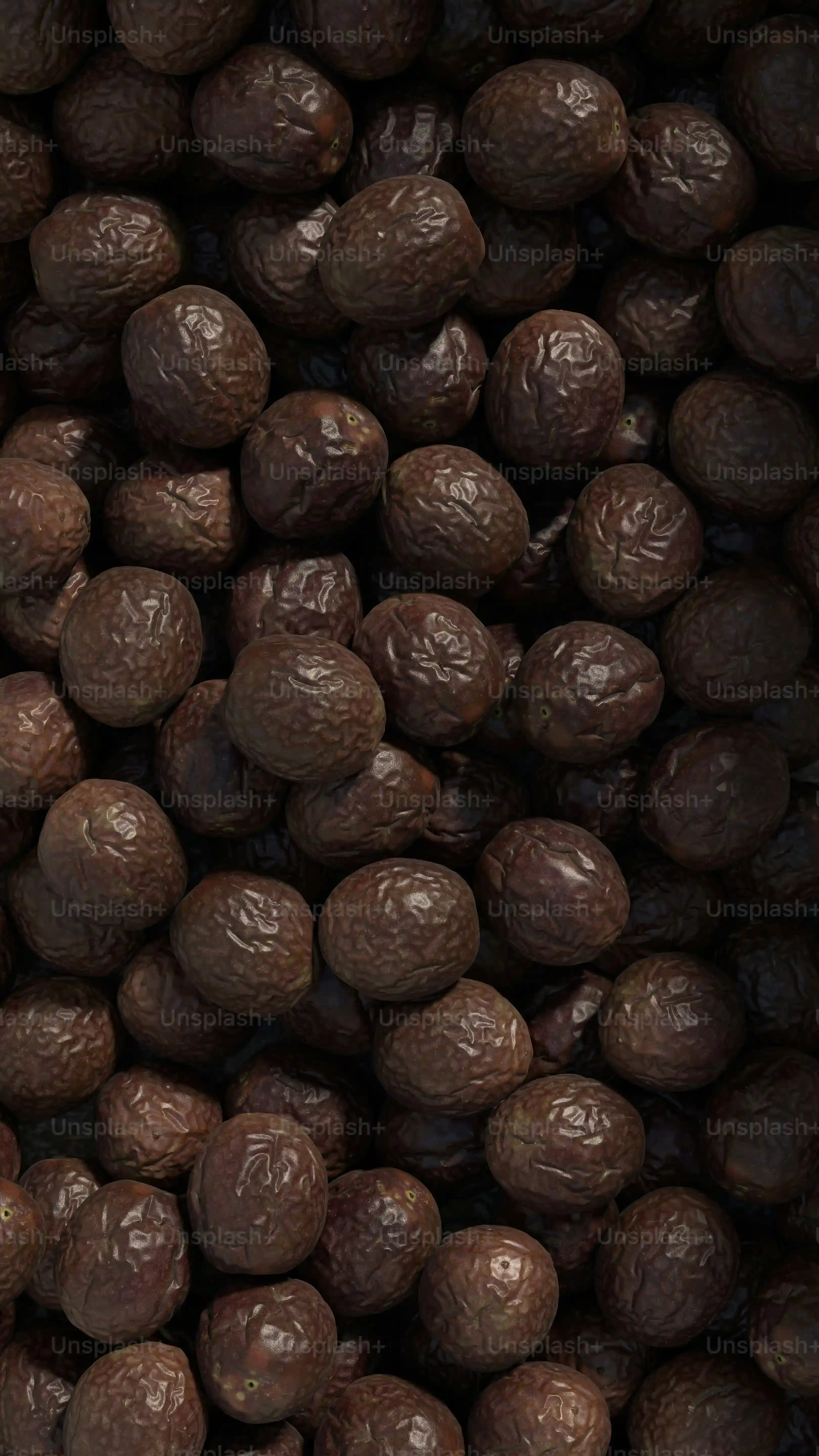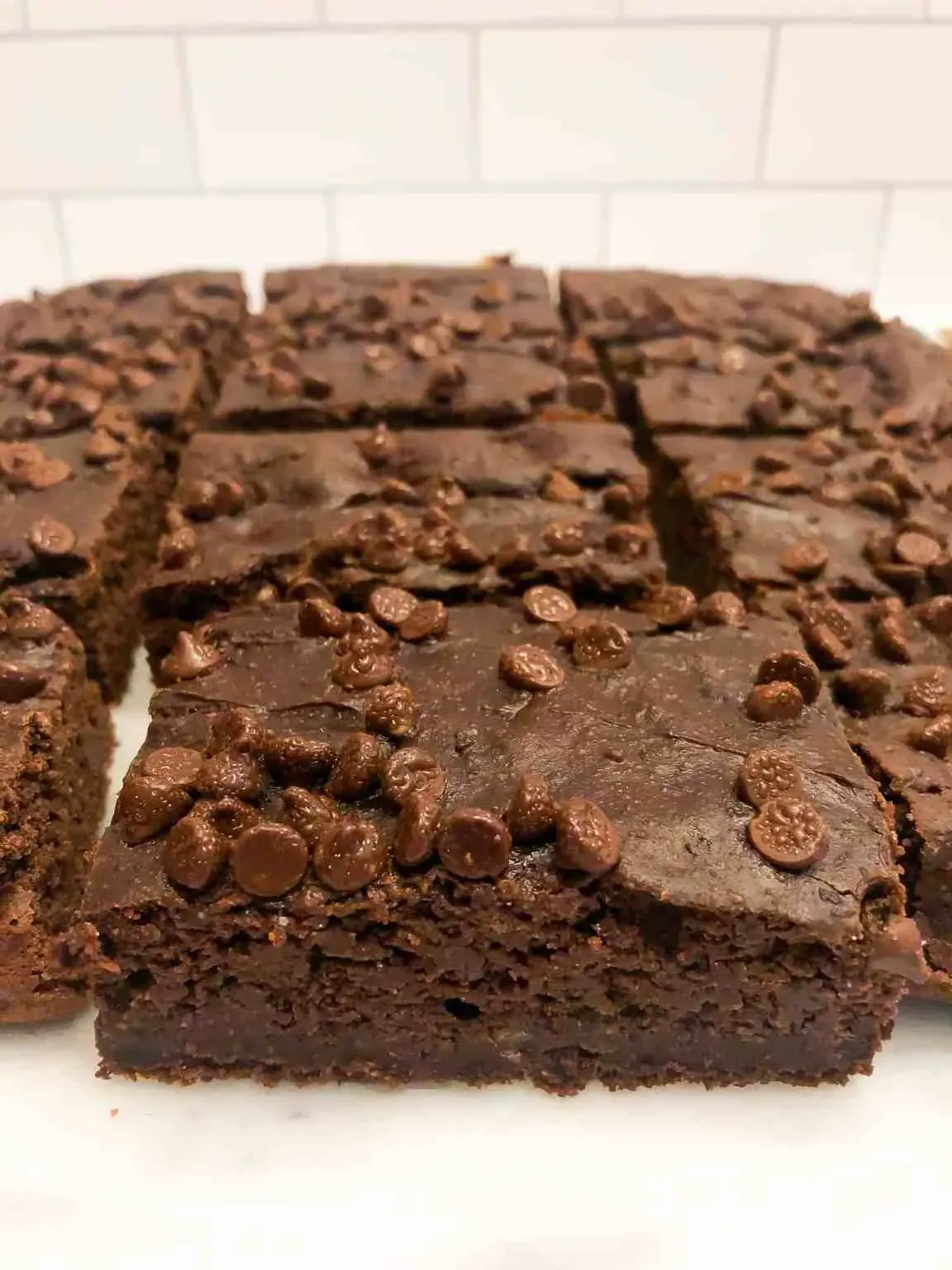Table of Contents
Let's be honest, sometimes you just want a brownie. But if you're trying to keep an eye on what you eat, the thought of a traditional decadent square can feel like a dietary disaster. Enter the black bean brownie, the internet's favorite "healthy" dessert hack. They promise fudgy goodness without the usual guilt trip. But what's the real story behind the numbers? Beyond the hype, people want to know the actual black bean brownie calories they're consuming. Are they truly a low-calorie miracle, or is it all just clever marketing? This article dives deep into the nutritional profile of these intriguing treats, breaking down the calorie count and exploring what else you get in each bite. We'll look at the fat, carbs, fiber, and protein, and even tackle that burning question: what happens to the black bean brownie calories when you start swapping ingredients? Stick around, and we'll get to the bottom of whether these brownies live up to their healthy reputation.
Breaking Down the Black Bean Brownie Calories

Breaking Down the Black Bean Brownie Calories
So, How Many Calories Are We Talking?
Alright, let's get right to it. The main question everyone asks is about the black bean brownie calories. Based on standard recipes, you're typically looking at around 100 to 120 calories per brownie. Now, compared to a traditional bakery brownie that can easily hit 300-400 calories, that sounds pretty good. It's not zero, obviously, but it's a significant drop. This figure usually accounts for a modest-sized square, not some giant slab. The exact number depends heavily on the specific recipe, especially what kind of sweetener and fat are used, and crucially, how many chocolate chips make it into the mix.
Where Do Those Calories Come From?
It's not magic; calories still come from ingredients. In black bean brownies, the bulk of the calories generally come from the sweetener (maple syrup, sugar, etc.), the fat source (oil, nut butter), and any add-ins like chocolate chips or nuts. The black beans themselves contribute some calories, but they also bring fiber and protein, which can help you feel fuller. Flour, if used (some recipes skip it), also adds to the count. It's a mix, but often the added sugars and fats are the heaviest hitters calorie-wise.
Ingredient Type | Typical Contribution to Calories |
|---|---|
Black Beans | Relatively low; adds fiber/protein |
Sweetener (Maple Syrup/Sugar) | Significant; simple carbohydrates |
Fat (Oil/Nut Butter) | High; dense calorie source |
Chocolate Chips | High; depends on quantity and type |
Oats/Flour | Moderate; carbohydrates |
Calculating the Calorie Count: What's Included?
When you see a number for black bean brownie calories, it's usually based on a calculation of all the ingredients in the batch, divided by the number of servings the recipe yields. Most reliable sources include everything: the beans, the sweetener, the fat, the cocoa powder, and yes, definitely the chocolate chips. If a recipe boasts a super low-calorie count, it's worth checking if they've skipped the chocolate chips or used a sugar substitute, which changes the whole deal. Always assume the listed calories include the good stuff unless explicitly stated otherwise.
Beyond the Black Bean Brownie Calories: What Else is Inside?

Beyond the Black Bean Brownie Calories: What Else is Inside?
It's Not Just About the Numbers: Fiber and Protein
so we've talked about the black bean brownie calories. But focusing only on calories is like judging a book by its cover. What makes these brownies different, and dare I say, potentially better than their traditional counterparts, is what else they bring to the party. The star ingredient, black beans, isn't just there to act as a binder and reduce flour. Those little legumes pack a decent punch of dietary fiber and plant-based protein. Fiber is your friend; it helps you feel full, keeps your digestion moving smoothly, and can even help manage blood sugar spikes. Protein is also crucial for satiety and muscle repair. So, while a traditional brownie might give you a quick sugar rush followed by a crash, the fiber and protein in the black bean version can offer a more sustained energy release. It's a small win, but a win nonetheless.
More Than Empty Calories: Vitamins, Minerals, and Antioxidants
Beyond the fiber and protein from the beans, the specific ingredients you choose can add other nutritional benefits. Cocoa powder, for example, especially unsweetened natural cocoa, is loaded with antioxidants. These are the compounds that help fight off cellular damage. If you use a nut butter instead of oil, you're adding some healthy fats and potentially more protein and micronutrients like Vitamin E or magnesium. Even the sweetener choice matters; while maple syrup is still sugar, it contains trace minerals that white sugar doesn't. It's not exactly a health food superhero, but it's certainly bringing more to the table nutrient-wise than a brownie made purely from white flour, sugar, and butter. It's about getting a little extra bang for your black bean brownie calorie buck.
Key Nutrient | Source in Black Bean Brownies | Potential Benefit |
|---|---|---|
Fiber | Black Beans, Oats (if used) | Satiety, Digestive Health, Blood Sugar Management |
Protein | Black Beans, Nut Butter (if used) | Satiety, Muscle Repair |
Antioxidants | Cocoa Powder, Dark Chocolate Chips | Cellular Protection |
Healthy Fats | Oil (certain types), Nut Butter | Energy, Vitamin Absorption |
Black Bean Brownie Calories: What Happens When You Make Swaps?

Black Bean Brownie Calories: What Happens When You Make Swaps?
Playing Around with Ingredients Changes Things
so you've got the basic black bean brownie calorie count down. But what if you don't have maple syrup, or you prefer using something else instead of oil? This is where things get interesting, and frankly, a little less predictable. Every substitution you make has a ripple effect on the final nutritional profile, especially the calorie count. Swapping out a high-calorie ingredient for a lower-calorie one seems straightforward, right? Well, sometimes. Replacing oil with applesauce, for instance, will definitely drop the fat and calorie content. But sometimes, a swap introduces new variables, like different types of sugars or fats, or changes the texture so much you need to add something else to compensate. It's not just a simple subtraction problem; it's more like a culinary chemistry experiment where the outcome isn't always what the nutrition label on the original ingredient might suggest in isolation.
Common Swaps and Their Calorie Consequences
Let's talk about some popular swaps people try. A frequent one is ditching the oil for peanut butter or another nut butter. While nut butter adds protein and a different kind of fat, it's often calorie-dense, sometimes even more so than the oil it replaces, depending on the amount used. So, thinking you're cutting calories with that swap might be a miscalculation. Another common change is using honey instead of maple syrup. Both are caloric sweeteners, but honey is often slightly denser in calories by weight and brings its own distinct flavor, which might not be what you want in a brownie. Using a sugar substitute instead of maple syrup or sugar is the most direct way to slash black bean brownie calories from the sweetener source, but be mindful of the specific substitute's properties and how it bakes. Not all sugar-free options behave the same way in the oven.
Substitution | Typical Impact on Calories | Notes |
|---|---|---|
Oil with Applesauce | Likely Decrease | Can affect texture; may need less liquid |
Oil with Nut Butter | Variable (Often Similar or Higher) | Adds protein/different fats; check specific nut butter calories |
Maple Syrup with Honey | Often Similar or Slightly Higher | Different flavor profile |
Maple Syrup/Sugar with Sugar Substitute | Significant Decrease | Baking properties vary by substitute; check conversion ratios |
Omitting Chocolate Chips | Significant Decrease | Fundamentally changes the brownie experience |
Why Black Bean Brownies (and Their Calories) Are Popular

Why Black Bean Brownies (and Their Calories) Are Popular
The "Healthy" Dessert Appeal
So why did these black bean brownies blow up in the first place? It really boils down to that classic human desire: wanting to eat your cake (or brownie) and have it too, without the perceived downside. People are constantly searching for ways to make comfort food fit into healthier lifestyles, and black beans offered a seemingly perfect solution. The idea is you replace some or all of the flour and fat with a nutrient-dense ingredient, theoretically lowering the black bean brownie calories and adding fiber and protein. It taps into the trend of hiding vegetables in sweets, making parents feel better about serving them and health-conscious folks feel less guilty indulging. Plus, the novelty of using beans in a dessert is intriguing enough to get people to try it. It's about perception as much as reality.
Think about it:
- Lower perceived calorie count compared to traditional brownies.
- Addition of fiber and protein from black beans.
- Often gluten-free friendly (if using certified GF ingredients).
- A way to "sneak" in a vegetable.
- Intrigue factor: "Beans in brownies? No way!"
Making the Most of Your Black Bean Brownie Calories

Making the Most of Your Black Bean Brownie Calories
Size Matters: Portion Control is Key
so we've established that black bean brownie calories are lower than traditional ones, but they aren't calorie-free magic. A common trap people fall into is thinking that because they're "healthy," they can eat the whole pan. Spoiler alert: you can't. Even at 100-120 calories a pop, eating five of them puts you right back in traditional brownie territory, calorie-wise, maybe even worse depending on the recipe. Making the most of your black bean brownie calories starts with sticking to a reasonable serving size. Think of it as a treat, not a main course. Cut them into modest squares, decide how many you're going to have *before* you sit down, and maybe put the rest away. It sounds simple, maybe even a little obvious, but it’s the single biggest factor in keeping that calorie count in check.
Ingredient Quality and Recipe Selection
Not all black bean brownie recipes are created equal, and the ingredients you use make a huge difference in the final black bean brownie calories and overall nutritional value. A recipe that relies heavily on oil and refined sugar will have a vastly different profile than one using a natural sweetener and perhaps a bit of nut butter for richness. Look for recipes that use whole ingredients where possible. Certified gluten-free oats are great, natural cocoa powder is your friend, and if you use chocolate chips, darker ones often have less sugar (check the label!). Don't be afraid to read through the recipe and assess the ingredient list critically. Does it seem balanced, or is it just trying to slap "black bean" onto an otherwise caloric bomb? Choose wisely.
When picking a recipe, consider:
- Type and amount of sweetener
- Type and amount of fat source
- Inclusion of chocolate chips or other high-calorie add-ins
- Use of whole grains (like oats) vs. refined flour
Pairing for Satisfaction, Not Just Calories
Eating a black bean brownie shouldn't feel like deprivation. You want to enjoy it! To make those black bean brownie calories truly satisfying, think about how you're eating it. Instead of just grabbing one on the go, take a moment. Sit down, savor it. Pairing it with something can also enhance the experience without piling on unnecessary calories. A cup of black coffee or tea provides warmth and flavor without adding anything. A few fresh berries on the side add natural sweetness and fiber. Avoid the instinct to top it with ice cream or whipped cream if your goal is calorie control – that defeats the purpose pretty quickly. The aim is to appreciate the brownie for what it is, a slightly healthier take on a classic, and feel content with one serving.
As someone once told me about moderation, "It's not about never having the thing you want; it's about having *just enough* of it to be happy."
The Final Bite on Black Bean Brownie Calories
So, there you have it. The black bean brownie calories clock in around 115 per serving, give or take, depending heavily on the specific recipe and, crucially, the chocolate chips involved. They offer a bit more fiber and protein than a traditional brownie, thanks to their namesake ingredient, but they aren't exactly a kale salad. Swapping ingredients can significantly alter these numbers and the final texture, sometimes for the better, sometimes not. They serve a purpose for those seeking a treat with a slightly different nutritional profile or avoiding gluten and dairy. Just remember, they're still a dessert. Enjoy them, but perhaps don't declare them health food revolutionary without checking the ingredient list and the actual calorie count.
